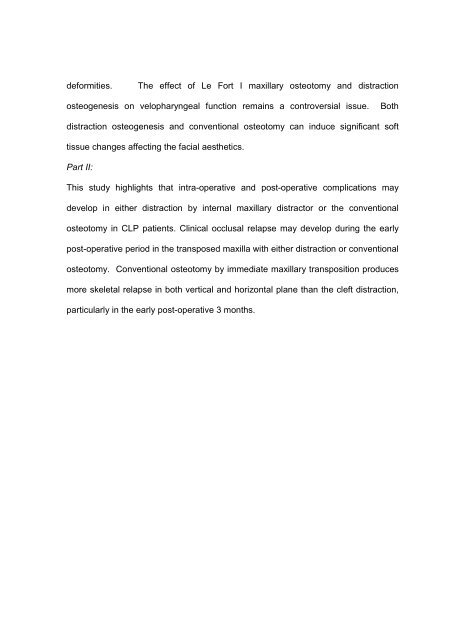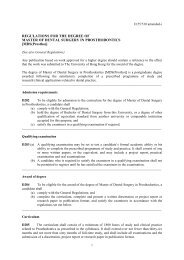Abstract Objectives: 1. To compare the surgical treatment methods of ...
Abstract Objectives: 1. To compare the surgical treatment methods of ...
Abstract Objectives: 1. To compare the surgical treatment methods of ...
You also want an ePaper? Increase the reach of your titles
YUMPU automatically turns print PDFs into web optimized ePapers that Google loves.
deformities.<br />
The effect <strong>of</strong> Le Fort I maxillary osteotomy and distraction<br />
osteogenesis on velopharyngeal function remains a controversial issue. Both<br />
distraction osteogenesis and conventional osteotomy can induce significant s<strong>of</strong>t<br />
tissue changes affecting <strong>the</strong> facial aes<strong>the</strong>tics.<br />
Part II:<br />
This study highlights that intra-operative and post-operative complications may<br />
develop in ei<strong>the</strong>r distraction by internal maxillary distractor or <strong>the</strong> conventional<br />
osteotomy in CLP patients. Clinical occlusal relapse may develop during <strong>the</strong> early<br />
post-operative period in <strong>the</strong> transposed maxilla with ei<strong>the</strong>r distraction or conventional<br />
osteotomy. Conventional osteotomy by immediate maxillary transposition produces<br />
more skeletal relapse in both vertical and horizontal plane than <strong>the</strong> cleft distraction,<br />
particularly in <strong>the</strong> early post-operative 3 months.





